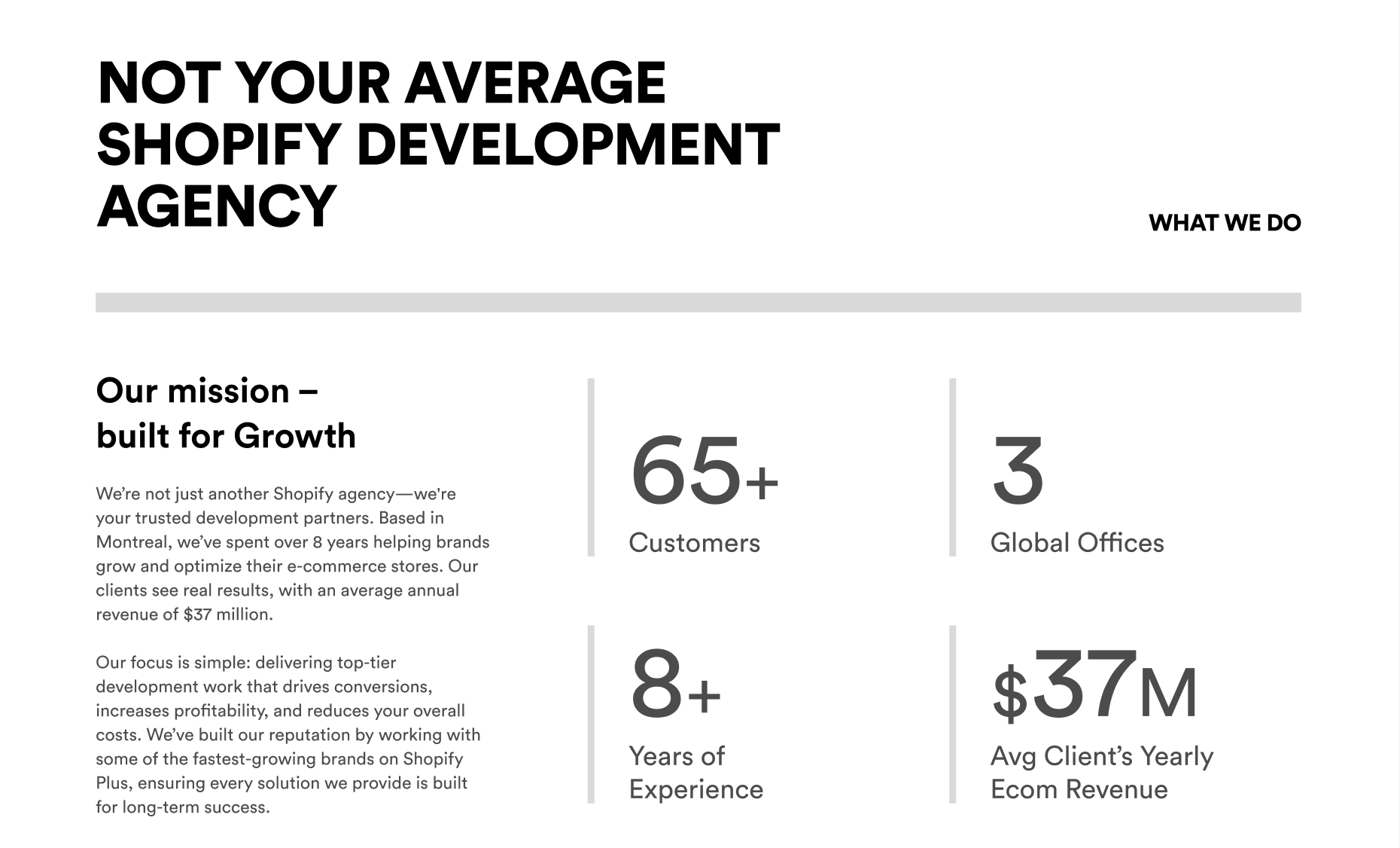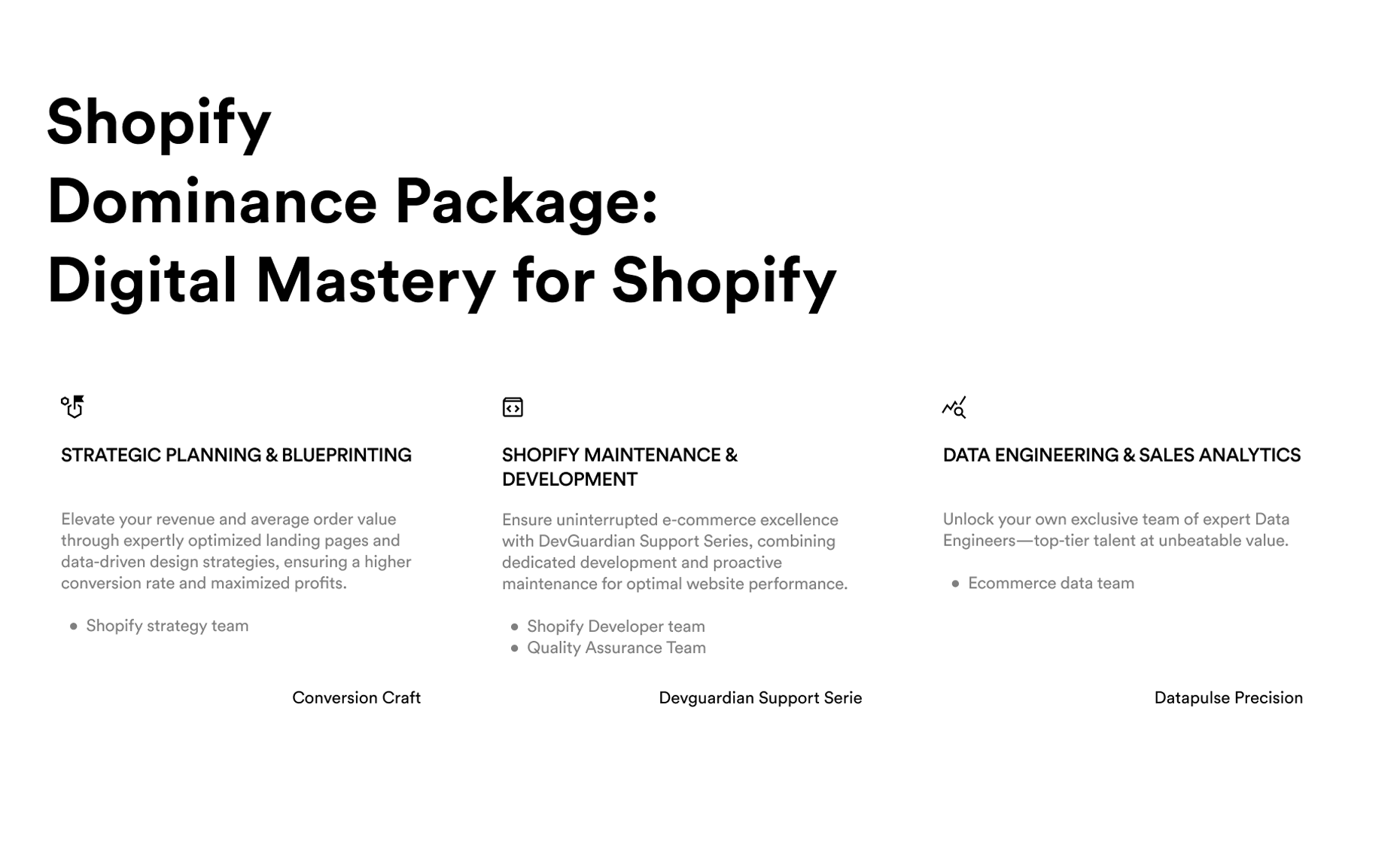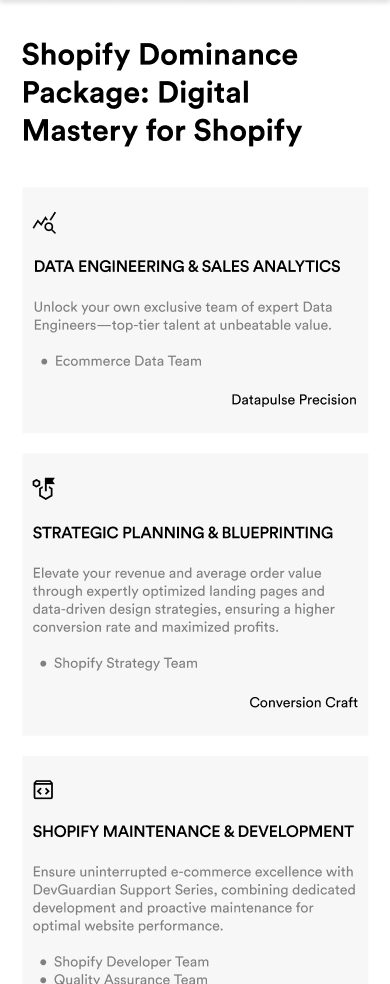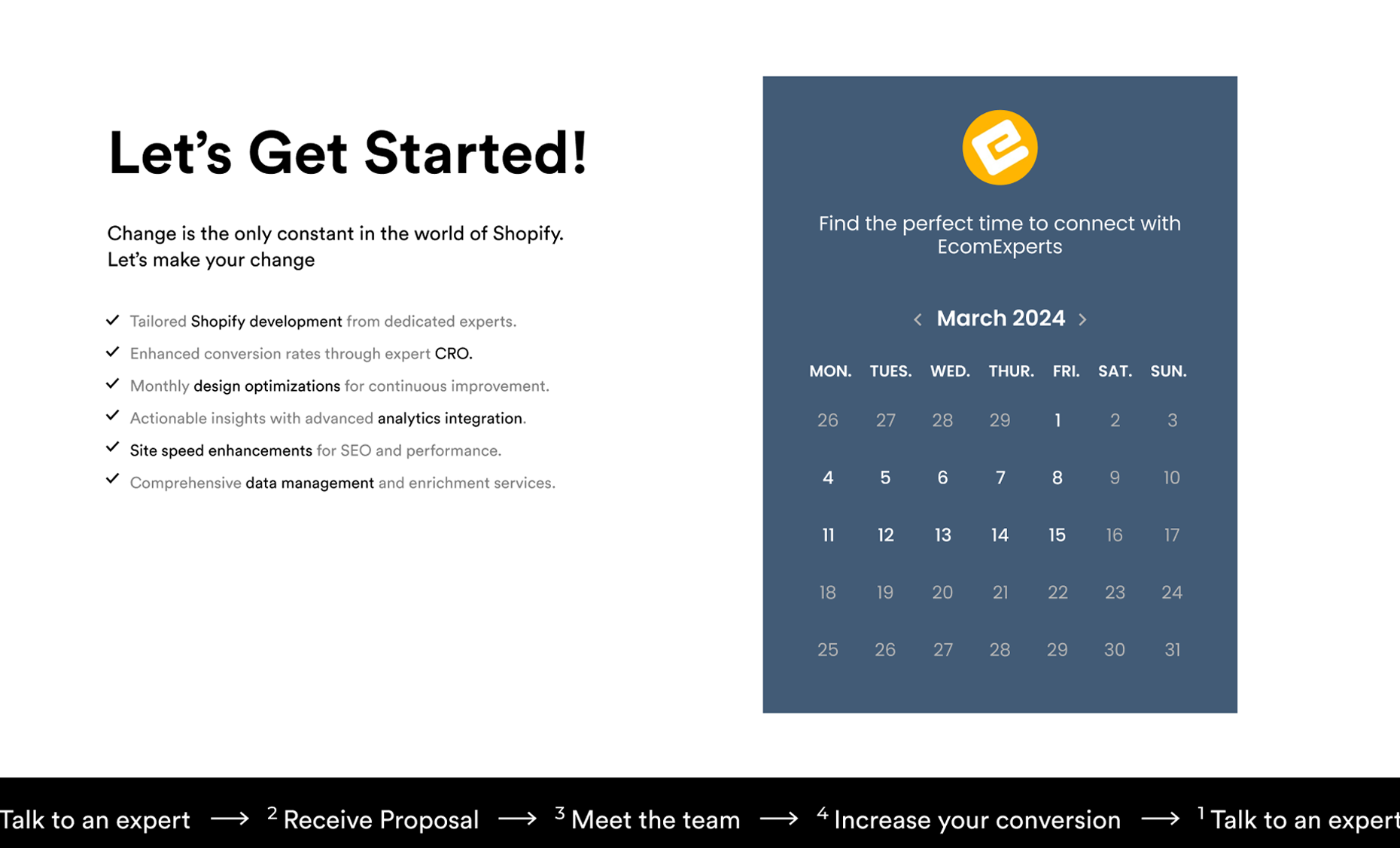What You'll Learn in this Blog:
- What is Shopify Cart Abandonment?
- Reasons for Shopify Cart Abandonment
- How to Reduce Shopify Cart Abandonment?
- How to Track and Analyze Shopify Cart Abandonment?
- Shopify Apps for Cart Abandonment
Imagine this scenario: A shopper adds items to their cart, makes it to the checkout, and just before hitting “complete purchase”… they leave. This is cart abandonment, and it’s a challenge every Shopify store faces.
In fact, the global cart abandonment rate across e-commerce sits at 69.8%, with Shopify stores experiencing similar numbers.
The consequences? Missed revenue opportunities, frustrated customers, and lower conversions. But, here’s the silver lining—by understanding why this happens and addressing it, you can recover a significant portion of these lost sales.
To tackle this issue effectively, we first need to understand what Shopify cart abandonment really means for e-commerce store owners.
What is Shopify Cart Abandonment?

In the simplest terms, cart abandonment happens when a shopper adds items to their cart but leaves your store before completing the purchase. It represents a gap in the buyer’s journey, where interest is high but commitment falls short.
Cart abandonment for Shopify store owners is a clear sign that something during the checkout process isn’t working, whether it’s pricing, friction during checkout, or lack of trust.
More than just an inconvenience, cart abandonment on Shopify can be a key performance metric to understand your store’s potential for conversion. The good news is Shopify provides native tools to help track and recover these lost sales opportunities.
How to Track Cart Abandonment on Shopify?

One of Shopify’s strengths is its user-friendly ability to track and recover abandoned carts, allowing you to regain lost sales. Here’s how you can easily find your abandoned carts:
- Go to Shopify Admin: Log in to your Shopify dashboard.
- Access Orders Section: Navigate to Orders on the sidebar and select Abandoned Checkouts.
- View Abandoned Carts: In this section, you can see a list of all abandoned carts and details on the items left behind, the total value of the cart, and the date of abandonment.
- Automated Cart Recovery: Set up Shopify’s built-in recovery email feature to automatically send reminders to customers, encouraging them to complete their purchase.
These tools provide you with actionable insights into which products are most often abandoned, and help you understand whether the issue lies in your checkout process, pricing, or shipping methods.
Reasons for Shopify Cart Abandonment

Cart abandonment can be frustrating for any Shopify store owner, but understanding the reasons behind it can help you address the issue and recover lost sales. Here are the most common reasons shoppers abandon their carts on Shopify:
1. Unexpected Shipping Costs
Imagine browsing through a store, finding the perfect product, and then being hit with high shipping costs at checkout. It’s one of the top reasons for cart abandonment.
Research shows that 44% of customers leave because of unexpected shipping fees. Customers like transparency, and seeing additional costs can quickly make them rethink their purchase.
How to Fix It: Offer free shipping if possible, or at least provide clear, upfront shipping estimates early in the shopping process.
Displaying shipping options and costs on the product page itself can help prevent sticker shock at checkout.
2. Complicated Checkout Process
A multi-step checkout process, unnecessary form fields, or a confusing user interface can deter customers.
Statistics show that 22% of shoppers abandon their carts due to a lengthy or complex checkout experience. If a customer feels like it’s taking too long, they’re likely to leave.
How to Fix It: Simplify the checkout process by reducing the number of steps and form fields required.
Consider implementing a one-page checkout that collects all necessary information quickly and efficiently. Make sure the checkout experience is mobile-friendly as well, given the growing percentage of mobile shoppers.
3. Lack of Trust Signals
Trust is everything in e-commerce. When customers don’t see clear trust signals like security badges (e.g., SSL certificates), clear return policies, or trusted payment methods, they are hesitant to complete their purchase.
In fact, 25% of online shoppers abandon their carts because they don’t trust the site with their credit card information.
How to Fix It: Display security badges (like SSL encryption, payment method logos, and third-party verifications) prominently on the checkout page.
Include customer reviews, testimonials, and a clear return policy to build credibility and reassure your customers that their transactions are safe.
4. No Guest Checkout Option
Forcing customers to create an account before making a purchase can be a significant barrier.
About 24% of shoppers abandon carts simply because they don’t want to go through the hassle of creating a new account.
Some customers prefer to complete their purchase quickly without the commitment of account creation.
How to Fix It: Offer guest checkout as an option. Once the transaction is complete, you can prompt the customer to create an account, offering benefits like tracking their order or earning rewards.
This gives them the flexibility to decide without feeling forced during the checkout process.
5. Slow Load Times
In e-commerce, speed is critical, it can either make or break your online store.
Studies indicate that 53% of mobile users will abandon a page if it takes longer than 3 seconds to load.
Slow checkout pages or product pages lead to frustration and cause shoppers to leave before completing their purchase.
How to Fix It: Optimize your Shopify store’s speed by compressing images, reducing the number of third-party apps, and ensuring that your site’s code is clean and efficient.
You can also use a Content Delivery Network (CDN) to improve load times for users around the globe.
6. Limited Payment Options
When customers reach the checkout page and don’t see their preferred payment method, they’re likely to leave.
Whether it’s PayPal, Apple Pay, or other international options, offering multiple payment methods is crucial in today’s diverse e-commerce landscape.
How to Fix It: Ensure that your Shopify store offers a variety of payment options, including PayPal, credit cards, Apple Pay, Google Pay, and other global payment methods like Klarna or Afterpay.
The more payment choices you provide, the more likely you’ll accommodate the needs of various customers.
How to Reduce Shopify Cart Abandonment?
Reducing Shopify cart abandonment is essential for improving your store’s conversion rates.
By addressing common friction points, you can significantly enhance the shopping experience and boost sales.
Here are detailed strategies to tackle cart abandonment on Shopify effectively:
1. Simplify the Checkout Process

A streamlined and efficient checkout process is crucial for reducing Shopify cart abandonment. Customers want a quick, hassle-free process to complete their purchase.
Actionable Tips:
- Reduce Checkout Steps: The fewer clicks, the better. Implement a single-page checkout, allowing customers to complete their purchase without navigating through multiple pages. Shopify’s default multi-step checkout can be simplified using apps that enable one-page checkout.
- Autofill Information: Offer autofill options for returning customers or use browser-saved data to automatically fill in details like shipping addresses and payment information. This reduces time spent on filling out forms.
- Progress Bar: Integrate a progress bar at checkout to show users how close they are to completing the purchase. This simple visual indicator helps reduce frustration by giving shoppers a clear understanding of the process.
Why This Works: Research shows that 18% of users abandon their carts because the checkout process is too long or complicated.
By reducing unnecessary steps and allowing auto-filled information, you minimize friction and encourage customers to complete their purchase.
2. Offer Transparent Shipping Costs

Unexpected shipping fees are one of the primary reasons for cart abandonment.
Customers dislike surprises at checkout, and hidden costs like high shipping rates can quickly lead to abandonment.
Actionable Tips:
- Display Shipping Costs Early: Show estimated shipping costs upfront, either on the product page or within the shopping cart. Use tools like a shipping calculator to give users an idea of what to expect before they proceed to checkout.
- Free Shipping Thresholds: Offer free shipping for orders that exceed a certain value. For example, customers are more likely to increase their cart value if they know they can qualify for free shipping after spending a little more.
- Flat-Rate Shipping: If feasible, offer flat-rate shipping to reduce variability in cost. Customers are more likely to commit to purchasing when they know exactly what they will be paying.
Why This Works: According to Baymard Institute, 49% of shoppers abandon their cart due to unexpected costs.
Offering transparency upfront removes this major pain point and builds trust with your customers.
3. Provide Multiple Payment Options

Payment flexibility is crucial in today’s e-commerce environment.
If a customer cannot find their preferred payment method, they are likely to abandon their cart and seek out a competitor who does offer it.
Actionable Tips:
- Add Popular Payment Gateways: Offer options like Apple Pay, PayPal, Google Pay, and Shopify Payments to give customers flexibility. Each of these platforms makes checkout quicker and more secure.
- Install Buy Now, Pay Later (BNPL) Options: Services like Klarna, Afterpay, or Shop Pay Installments give customers the ability to split payments over time, increasing their willingness to complete purchases.
- International Payment Methods: If your store operates globally, ensure you’re offering popular regional payment methods that cater to your international audience. This helps reduce cart abandonment from global customers.
Why This Works: According to Statista, 9% of customers abandon carts because there weren’t enough payment options.
Ensuring that you cater to various payment preferences can make or break the sale.
4. Optimize Page Load Speed

Page speed is a critical factor in reducing cart abandonment.
Slow-loading checkout pages can frustrate customers, leading them to leave before completing their purchase.
Actionable Tips:
- Compress Images and Files: Ensure that all images are optimized and compressed for web use. Convert images to WebP format to reduce their size without sacrificing quality.
- Minimize JavaScript and CSS: Remove unnecessary code and minify JavaScript and CSS files to reduce the time it takes for your page to load. Defer non-essential scripts to load after the main content.
- Leverage a CDN: Implement a Content Delivery Network (CDN) like Cloudflare to ensure your store’s assets are loaded from the closest server to the customer, reducing latency and improving load times.
Why This Works: Research by Google shows that a 1-second delay in page load time can lead to a 20% drop in conversions. Faster page loads reduce the risk of customers abandoning their cart due to frustration.
For more detailed tips on optimizing your site speed, check out our Shopify Speed Optimization blog.
5. Add Trust Signals

Building trust is essential for converting first-time buyers.
If customers feel unsure about the security of their personal information or the legitimacy of your store, they are less likely to complete a purchase.
Actionable Tips:
- Display Trust Badges: Prominently show trust badges such as SSL certificates, secure payment icons, and third-party verification logos (e.g., McAfee Secure, Trustpilot). These provide reassurance that your store is secure and legitimate.
- Customer Reviews: Display product reviews and testimonials on your product pages and during checkout. Customers trust the experiences of others, and reviews provide social proof that encourages them to complete their purchase.
- Clear Return and Refund Policies: Make your return and refund policies easy to understand and visible during checkout. Shoppers are more likely to make a purchase when they know they can easily return items if needed.
Why This Works: Trust is a key factor in e-commerce. Data indicates that 58% of shoppers avoid completing a purchase if they don’t see clear security assurances. Adding these elements can increase customer confidence and reduce cart abandonment.
By implementing these proven strategies, you can significantly reduce cart abandonment rates on Shopify.
Whether it’s by offering transparent shipping, simplifying checkout, or optimizing for speed, these actions contribute to a better customer experience and a higher likelihood of completing sales.
How to Track and Analyze Shopify Cart Abandonment?
Tracking and analyzing cart abandonment is essential to understanding why customers leave without completing their purchase and identifying ways to recover those lost sales.
Using the built-in tools you can monitor and analyze cart abandonment on Shopify effectively.
Accessing Shopify Analytics

To begin tracking cart abandonment on Shopify, you’ll need to access Shopify’s analytics tools.
Shopify makes it easy to find abandoned cart data directly within your Shopify Admin Dashboard. Here’s how you can do it:
- Log in to Shopify Admin: Navigate to the Shopify dashboard.
- Orders Section: Go to the Orders tab and select Abandoned Checkouts. This section shows you detailed information about customers who left items in their carts without completing a purchase.
- Automated Reports: In the Analytics section, you can access various reports that display your store’s overall performance, including cart abandonment metrics.
By regularly visiting these reports, you can keep track of how many carts are being abandoned and take appropriate action through recovery emails or other strategies.
Key Metrics to Watch
Once you’re in the Abandoned Checkouts section, it’s important to focus on key metrics that will help you measure the severity of cart abandonment and your recovery efforts. Here are the critical metrics you should monitor:
1. Cart Abandonment Rate: This metric shows the percentage of visitors who add items to their cart but leave without completing the purchase.
A high cart abandonment rate indicates a need for checkout optimization. Shopify calculates this rate automatically, but you can also do it manually:
Cart Abandonment Rate = (Total Number of Carts Created / Number of Abandoned Carts) × 100
2. Recovery Rate Through Emails: This is the percentage of customers who return to complete their purchase after receiving an abandoned cart email.
A high recovery rate suggests that your emails are effective, while a low rate might indicate a need for stronger messaging or better timing.
3. Cart Abandonment Trends: Analyze abandonment trends over time.
Are abandonment rates higher during certain promotions or on specific devices (mobile vs. desktop)?
Tracking trends will give you insight into when and where customers are most likely to abandon their carts, allowing you to address those friction points.
4. Lost Revenue: Keep an eye on the estimated value of the items in abandoned carts. Understanding how much revenue you are missing can help you prioritize efforts in cart recovery.
Using Shopify Reports and Third-Party Tools
For a more detailed analysis of cart abandonment, Shopify’s reports offer in-depth insights, allowing you to drill down into specific behaviors.
Shopify Reports provide data on customer behavior throughout the entire purchase funnel, from adding items to the cart to leaving the checkout page.
To access Shopify Reports:
- Shopify Admin Dashboard: Go to Analytics and click on Reports.
- Behavior Reports: Look under Behavior to find reports on abandoned carts, sales funnel, and checkout completion rates.
- Custom Reports: If you're using Shopify Plus, you can create custom reports that offer more granular details about abandoned carts and recovery efforts.
By continually monitoring and analyzing these data points, you’ll be better equipped to optimize your store and reduce cart abandonment over time.
Shopify Apps for Cart Abandonment
Preventing cart abandonment is crucial for maximizing revenue and improving customer experience. Shopify offers a variety of third-party apps designed to help merchants recover abandoned carts and reduce abandonment rates.
Here’s a detailed look at these apps:
1. Klaviyo

- Overview: Klaviyo is a robust email marketing platform that integrates seamlessly with Shopify. It provides advanced segmentation, automation, and reporting features that enhance abandoned cart email campaigns.
- Features: Klaviyo allows for highly personalized and targeted abandoned cart emails, with the ability to create custom flows based on customer behavior and preferences.
- Benefits: Enhanced automation, detailed analytics, and the ability to integrate with other marketing channels.
2. Privy

- Overview: Privy offers a range of tools designed to reduce cart abandonment, including pop-ups, exit-intent offers, and email capture forms.
- Features: Privy’s abandoned cart recovery includes automated emails and SMS reminders. It also provides features for creating engaging pop-ups and offers to capture leads before cart abandonment occurs.
- Benefits: Versatile tools for both cart recovery and lead generation, with easy-to-use templates and integration with other marketing tools.
3. Recart

- Overview: Recart focuses on abandoned cart recovery through automated Facebook Messenger and SMS campaigns, in addition to traditional email reminders.
- Features: Recart’s Messenger-based abandoned cart reminders offer a more direct and personal approach, with high open and click-through rates. The app also provides SMS notifications as a backup recovery method.
- Benefits: Multi-channel recovery strategies that increase the chances of re-engaging customers and completing the sale.
Wrapping up Shopify Cart Abandonment
Reducing cart abandonment requires a comprehensive approach, addressing each stage of the customer’s journey. Simplifying the checkout process is key—removing unnecessary steps, offering guest checkout, and ensuring a smooth, fast-loading experience.
Moreover, transparency in shipping costs and providing diverse payment options builds trust and keeps customers engaged.
Abandoned cart recovery emails play a crucial role in bringing customers back.
By personalizing emails with their names, showing the items they left behind, and offering incentives like discounts or free shipping, you can significantly increase your recovery rate and reduce lost sales.
Shopify Cart Abandonment FAQs
Q1. What is Shopify Cart Abandonment?
A1. Shopify cart abandonment occurs when a customer adds items to their cart but leaves the store without completing the purchase. This is a common issue that results in lost sales for online stores.
Q2. How do I check abandoned carts on Shopify?
A2. You can view abandoned carts by navigating to your Shopify Admin, clicking on Orders, and selecting Abandoned Checkouts. This section shows detailed information on customers who left without purchasing.
Q3. Why do people abandon carts on Shopify?
A3. Common reasons include unexpected shipping costs, complicated checkout processes, slow page load times, lack of payment options, and absence of trust signals.
Q4. How do I reduce cart abandonment on Shopify?
A4. To reduce cart abandonment, simplify the checkout process, display transparent shipping costs, offer multiple payment options, optimize page load speed, and add trust signals like security badges and customer reviews.
Q5. How do Shopify abandoned cart emails work?
A5. Shopify automatically sends abandoned cart emails to customers who leave items in their cart. These emails can include personalized messages, product details, and recovery incentives like discounts or free shipping to encourage customers to complete their purchase.












![What is Shopify Cart Abandonment? Detailed Guide [2024]](http://ecomexperts.io/cdn/shop/articles/ConvertOut-Resized-x_4_437a7dac-1807-4628-b956-7f70261fbecb.jpg?v=1730295305&width=1100)